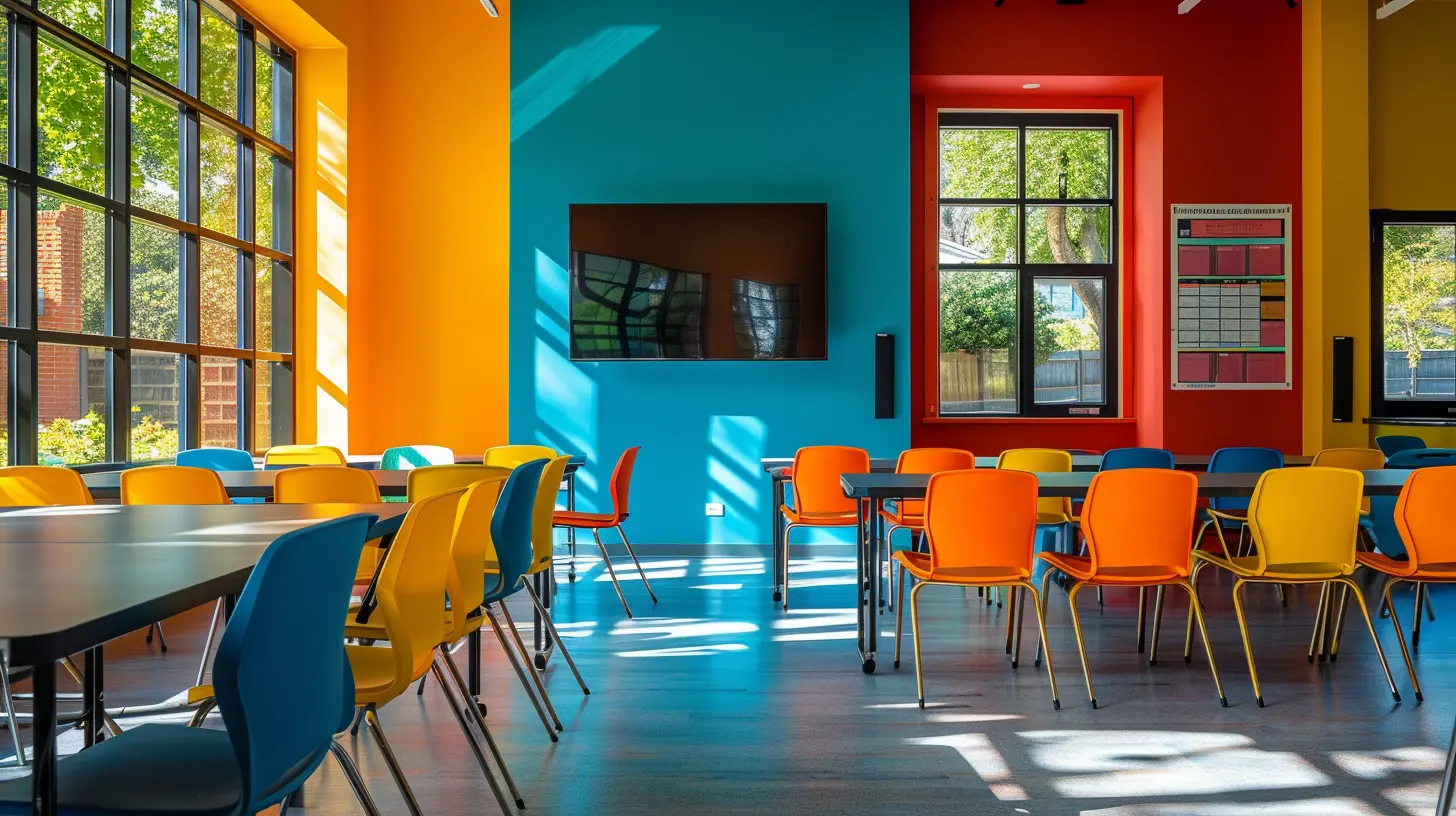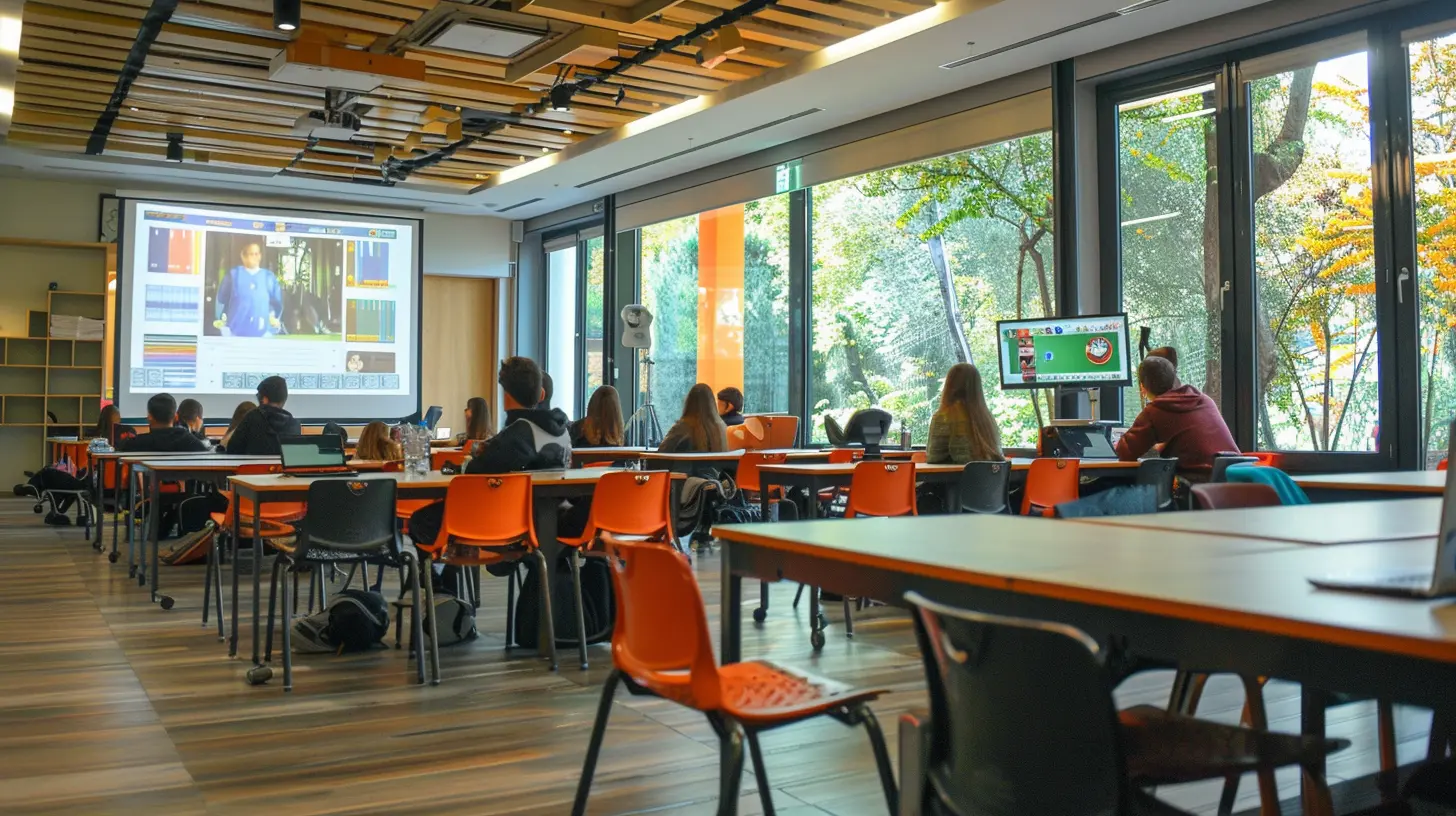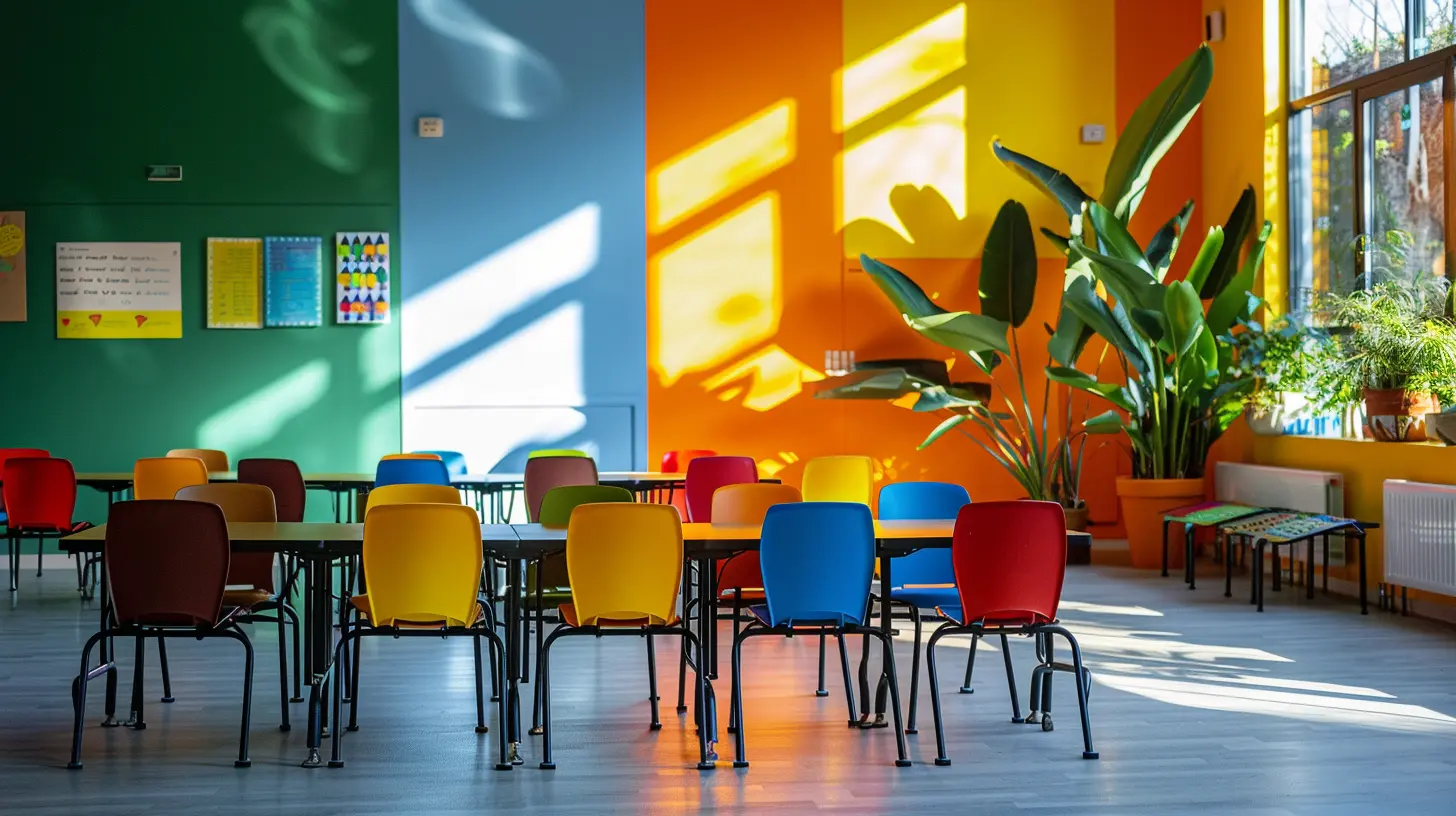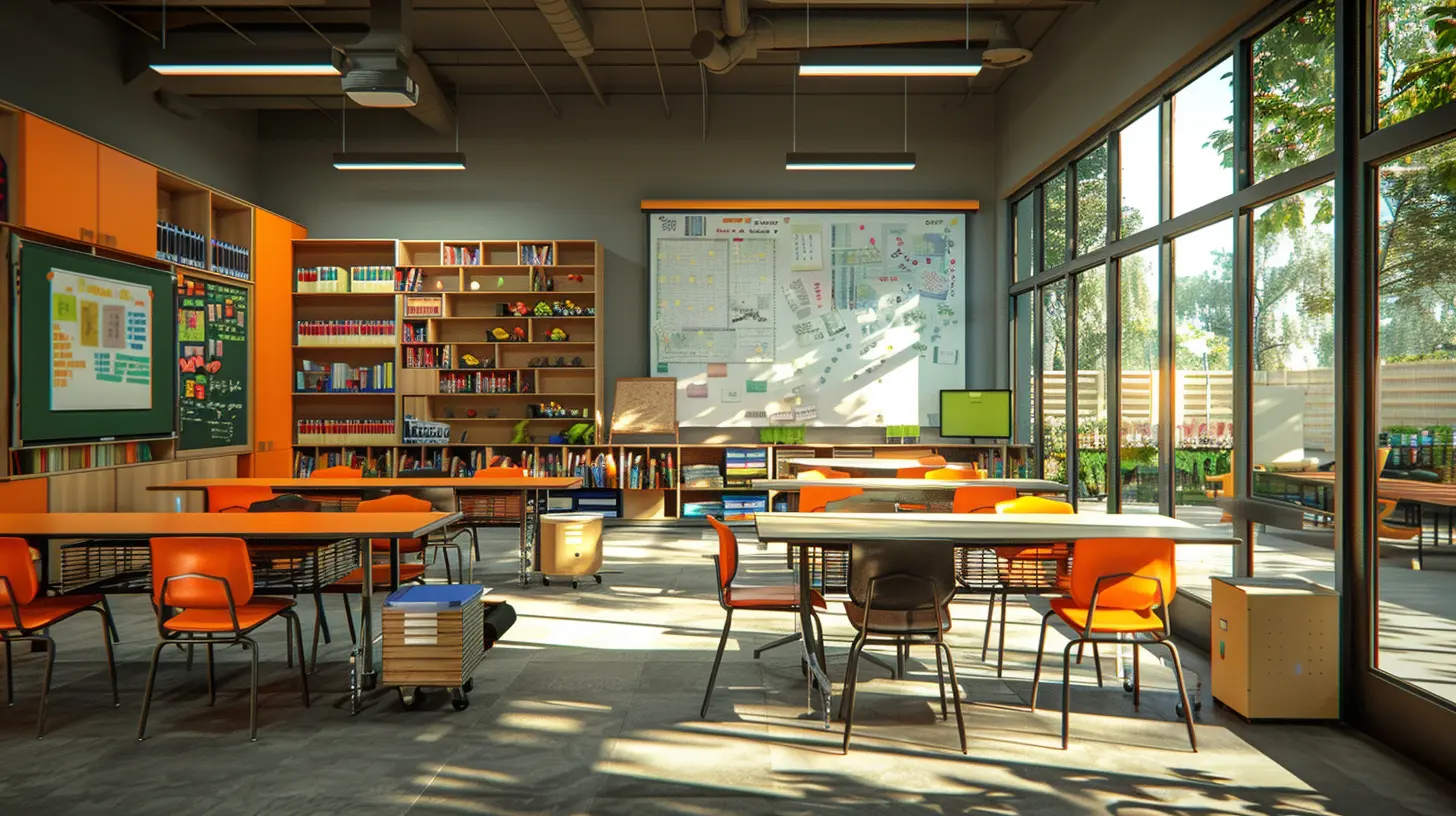Rethinking Classroom Spaces for Blended Learning Settings
26 November 2024
Blended learning is becoming the future of education. With the rise of technology, many schools and universities are adopting a hybrid approach that combines traditional face-to-face teaching with online learning. But here's the thing: our classrooms haven't really caught up with this shift. Most schools are still using the same rigid, old-school layouts that don’t quite support this new way of teaching. So, how can we rethink classroom spaces to better accommodate blended learning environments?
In this article, we’re going to explore what blended learning spaces should look like, why it's important, and how schools can create environments that foster both digital and in-person learning.
Let's dive in!

What is Blended Learning?
Before we jump into the nitty-gritty of classroom design, let's quickly recap what blended learning actually is. Blended learning is a teaching approach that combines traditional classroom instruction with online learning experiences. It offers flexibility, allowing students to learn at their own pace, while still benefiting from face-to-face interactions with their teachers and peers.The magic of blended learning lies in its versatility. It opens up a world of possibilities for students and teachers alike, from real-time collaboration to self-guided study. But in order for this approach to be effective, the physical space where learning happens needs to reflect that flexibility. And that’s where we come in.

Why Classroom Spaces Matter in Blended Learning
You might be thinking: "Why should the layout of a classroom matter if students are also learning online?" Well, that’s a fair question. But the truth is, the physical environment plays a huge role in shaping the learning experience. Imagine trying to have an engaging group discussion while everyone is sitting in rigid rows of desks facing forward. It’s tough, right?The design of a classroom can either foster creativity, collaboration, and fluid movement—or it can stifle it. In a blended learning setting, students need spaces where they can easily switch between different learning modes: online, collaborative, and individual. The traditional classroom setup just doesn't cut it anymore.
The Role of Flexibility
Flexibility is key. A blended learning classroom has to be adaptable to different activities, whether it’s group work, individual study, or teacher-led instruction. This means furniture that can be easily moved around, technology that’s easily accessible, and spaces that encourage both collaboration and independent learning. Think of it like a Swiss Army knife—your classroom should be able to do it all.
Key Elements of a Blended Learning Classroom
So, how do you actually design a classroom that supports blended learning? Let’s break it down:1. Flexible Furniture
Gone are the days when rows of desks ruled the classroom. In a blended learning environment, the furniture needs to be mobile and adaptable. Chairs and desks that can be easily rearranged allow students to work in different configurations—whether that’s group work, pairs, or solo study.Think of it like this: furniture should move as easily as the learning does. If students are transitioning from a group project to individual online work, the room should be able to shift with them. Consider modular furniture that can be easily moved or stacked when not in use.
2. Technology Integration
Technology is the backbone of blended learning, so the classroom needs to be tech-friendly. This doesn’t just mean having a couple of computers in the corner. We’re talking about full integration of digital tools—laptops, tablets, interactive whiteboards, and reliable Wi-Fi.But it’s not just about having the tools; it’s about how they’re used. The technology should be seamlessly integrated into the space, so students can transition between physical and digital tasks without missing a beat. Charging stations should be readily available, and screens should be positioned so that they can be seen by the entire class.
3. Collaborative Zones
Blended learning emphasizes collaboration, so classrooms need dedicated spaces where students can work together. These zones should have comfortable seating, access to technology, and enough space for students to spread out their materials.Picture those trendy co-working spaces you see for startups—now imagine that in a classroom setting. These collaborative zones should have a casual, open vibe where students can brainstorm, discuss, and work on projects together.
4. Quiet Zones for Individual Work
While collaboration is important, students also need quiet spaces for focused, individual study. In a blended learning setting, students will often work independently on online assignments or research. These quiet zones should be free from distractions, with comfortable seating and access to power outlets for devices.Think of these areas as the library corners of the classroom—cozy, quiet, and perfect for diving into deep work.
5. Interactive Whiteboards and Presentation Areas
Blended learning isn’t just about students working on their own; teachers still play a crucial role. That’s why classrooms should include presentation areas where teachers can guide discussions, give lectures, or demonstrate concepts. Interactive whiteboards or smartboards are a great way to integrate technology into these areas, allowing teachers to share digital content while still engaging with the class in person.These spaces also allow students to present their work, fostering peer-to-peer learning and giving them the chance to practice public speaking.

The Psychological Impact of Classroom Design
Let’s not forget that the design of a classroom also has a psychological impact on students. A well-designed space can inspire creativity, reduce stress, and make students feel more comfortable.For instance, natural light has been shown to improve focus and mood. Classrooms with plenty of windows or soft lighting can help reduce the feeling of being trapped in a box, which is often how traditional classrooms feel. Add in some greenery, like plants or even a small indoor garden, and you’ve got a space that’s not only functional but also inviting.
When students feel comfortable and relaxed, they’re more likely to engage and participate.
Color Schemes and Decor
Believe it or not, even the color of the walls can make a difference. Bright, bold colors can be stimulating, but they can also be overwhelming. Softer, neutral tones tend to create a calmer environment, which is ideal for a blended learning space where students will be shifting between different activities.In terms of decor, keep it simple but meaningful. Inspirational quotes, student artwork, or even digital screens displaying rotating educational content can give the room a dynamic feel.
Challenges of Reconfiguring Classroom Spaces
Of course, rethinking classroom spaces for blended learning isn’t without its challenges. One of the biggest hurdles is budget. Not all schools have the resources to completely overhaul their classrooms with new furniture, technology, and decor.But here’s the good news: you don’t have to do it all at once. Start small. Even a few changes—like rearranging the seating or adding a collaborative zone—can make a big difference. Schools can also look into grants or partnerships with tech companies to help fund the integration of digital tools.
Another challenge is the mindset shift required. Teachers and administrators may be used to traditional classroom setups, and changing that can be tough. But with the right training and support, educators can learn how to use these new spaces to their full potential.
The Future of Classroom Design
So, what does the future hold for classroom design in blended learning settings? Well, one thing’s for sure: flexibility will continue to be a top priority. As education evolves, so too will the spaces where learning happens.We might see more schools adopting open-plan layouts, similar to modern office spaces, where students can move freely between different learning zones. Outdoor learning spaces could also become more popular, offering a change of scenery and fresh air.
Virtual reality (VR) and augmented reality (AR) could also play a role in future classroom design, allowing students to explore digital worlds without ever leaving their desks.
The bottom line is this: the traditional classroom as we know it isn’t going to cut it anymore. To truly support blended learning, we need spaces that are as dynamic as the learning itself.
Final Thoughts
Rethinking classroom spaces for blended learning settings isn’t just about upgrading furniture or installing new tech. It’s about creating an environment that supports the way students learn today—and will learn tomorrow. Whether it’s through flexible seating, collaborative zones, or tech integration, the goal is to design spaces that are adaptable, inclusive, and engaging.So, next time you walk into a classroom, ask yourself: does this space inspire learning? If not, it might be time for a rethink.
all images in this post were generated using AI tools
Category:
Blended LearningAuthor:

Bethany Hudson
Discussion
rate this article
16 comments
Winona Banks
Rethinking classroom spaces for blended learning is vital for fostering engagement and creativity. By prioritizing flexibility and collaboration, we empower students to thrive in diverse learning environments. Let's embrace this opportunity to enhance their educational experiences!
March 27, 2025 at 4:32 AM

Bethany Hudson
Thank you for your insightful comment! I completely agree that flexible and collaborative spaces are essential for enhancing student engagement and creativity in blended learning environments.
Taryn McCall
Rethinking classroom spaces is essential for enhancing blended learning experiences. Flexible arrangements, technology integration, and collaborative areas foster engagement and support diverse learning styles. Educators must prioritize adaptable environments that promote interaction and accessibility, ensuring all students benefit from the advantages of blended learning methodologies. Such changes can significantly impact educational outcomes.
February 4, 2025 at 5:19 AM

Bethany Hudson
Thank you for your insightful comment! I completely agree that flexible and tech-integrated classroom designs are crucial for maximizing engagement and supporting diverse learning styles in blended learning environments.
Max Lamb
Great insights on optimizing classroom spaces! Rethinking our environments can truly enhance blended learning experiences.
January 30, 2025 at 8:54 PM

Bethany Hudson
Thank you! I'm glad you found the insights valuable for enhancing blended learning experiences. Your feedback is appreciated!
Halle Rivera
Flexible spaces enhance collaboration and engagement effectively.
January 27, 2025 at 11:42 AM

Bethany Hudson
Thank you! Indeed, flexible spaces are key to fostering collaboration and engagement in blended learning environments.
Zadie Ellison
Transforming spaces can elevate blended learning; innovation begins with reimagining our classrooms.
January 24, 2025 at 9:15 PM

Bethany Hudson
Absolutely! Rethinking classroom spaces is vital for fostering innovation and enhancing blended learning experiences. Your insights are spot on!
Ellie McCray
Rethinking classroom spaces is essential; flexible environments enhance collaboration, engagement, and adaptability in blended learning settings. Embrace the change!
January 16, 2025 at 1:19 PM

Bethany Hudson
Thank you for your insightful comment! I completely agree—flexible classroom spaces are key to fostering collaboration and adaptability in blended learning environments. Embracing change is vital for enhancing the learning experience!
Wilder McVicar
Oh, because who wouldn’t want a classroom that doubles as a cozy café? Let’s add some bean bags and a barista station—because nothing says "serious learning" like sipping lattes while texting your friends about the latest TikTok dance!
January 11, 2025 at 1:28 PM

Bethany Hudson
I appreciate your humor! While a cozy café vibe might seem unconventional, creating comfortable spaces can enhance engagement and collaboration in blended learning environments.
Thaddeus Davis
This article offers valuable insights into optimizing classroom environments for blended learning. Rethinking space design fosters collaboration and adaptability, enhancing student engagement and supporting diverse learning styles. A must-read for educators!
January 4, 2025 at 8:57 PM

Bethany Hudson
Thank you for your insights! I'm glad you found the article useful for enhancing classroom design and promoting student engagement.
Archer McCullough
Rethinking classroom spaces for blended learning? Just remember, if the desks start moving on their own, you might accidentally end up in a game of 'Musical Chairs: Zoom Edition.' Let's hope the only thing blended is the learning, not the furniture!
December 31, 2024 at 7:47 PM

Bethany Hudson
Thanks for the laugh! It's true that thoughtful design can enhance learning without turning the classroom into a game. Let's keep the focus on blending learning, not furniture!
Halle Roth
This article beautifully highlights the importance of adaptable classroom environments. Embracing flexible spaces truly empowers both educators and students to thrive in blended learning scenarios.
December 17, 2024 at 10:02 PM

Bethany Hudson
Thank you for your insightful comment! I'm glad you found the article valuable in emphasizing the role of adaptable environments in enhancing blended learning.
Whitney McPhail
Transforming classroom spaces is essential for effective blended learning. Innovative designs foster collaboration, engagement, and adaptability, ensuring students thrive in both physical and digital environments. Let's embrace change for a brighter educational future!
December 12, 2024 at 9:33 PM

Bethany Hudson
Thank you for your insightful comment! I completely agree—transformative classroom designs are key to enhancing collaboration and engagement in blended learning environments. Embracing these changes is crucial for our students' success.
Matilda Whitaker
Thank you for this insightful article! Rethinking classroom spaces is essential for maximizing the benefits of blended learning. Emphasizing flexibility and collaboration can significantly enhance student engagement and facilitate diverse learning styles. Looking forward to seeing these ideas in action!
December 11, 2024 at 9:31 PM

Bethany Hudson
Thank you for your thoughtful feedback! I'm glad you found the article insightful, and I completely agree on the importance of flexibility and collaboration in enhancing student engagement. Excited to see these ideas come to life!
Christina Hurst
Transforming classroom spaces is essential for maximizing engagement and effectiveness in blended learning environments. Let's lead the change!
December 1, 2024 at 3:24 AM

Bethany Hudson
Absolutely! Rethinking classroom spaces is crucial for fostering better engagement and enhancing the blended learning experience. Let's innovate together!
Finn Montgomery
This article offers valuable insights into transforming classroom spaces for blended learning. I appreciate the thoughtful approach to creating environments that foster collaboration and engagement for all students. Thank you for sharing!
November 28, 2024 at 1:36 PM

Bethany Hudson
Thank you for your kind words! I'm glad you found the insights helpful in rethinking classroom spaces for blended learning.
Rylan Ward
This article beautifully highlights the importance of adaptable classroom environments in today's blended learning landscape. By reimagining our spaces, we can foster collaboration, creativity, and engagement among students. Excited to see how these innovative ideas transform our educational experiences for the better! Keep up the inspiring work!
November 27, 2024 at 8:39 PM

Bethany Hudson
Thank you for your insightful comment! I'm glad you found the article inspiring and agree on the importance of adaptable classroom environments in enhancing student engagement and collaboration.
Maura Sullivan
Classrooms need more flair—less chairs, more cool chairs!
November 27, 2024 at 3:22 AM

Bethany Hudson
I completely agree! Innovative seating can enhance engagement and creativity in blended learning environments.
MORE POSTS

Tips for Improving English Pronunciation Without a Teacher

Collaborative Decision-Making: Empowering Students to Take Charge

Learning English Through Storytelling: A Fun Approach for ESL Learners

The Importance of Lifelong Learning in an Evolving Career Landscape

How to Use Reflection to Improve Your Study Strategies

Building Emotional Intelligence to Navigate Teaching Stress

Collaborative Learning in Language Acquisition: A Path to Fluency

The Role of Humor in Alleviating Teacher Stress

How to Keep Students on Task During Group Work

Understanding Nonverbal Learning Disabilities: What You Need to Know